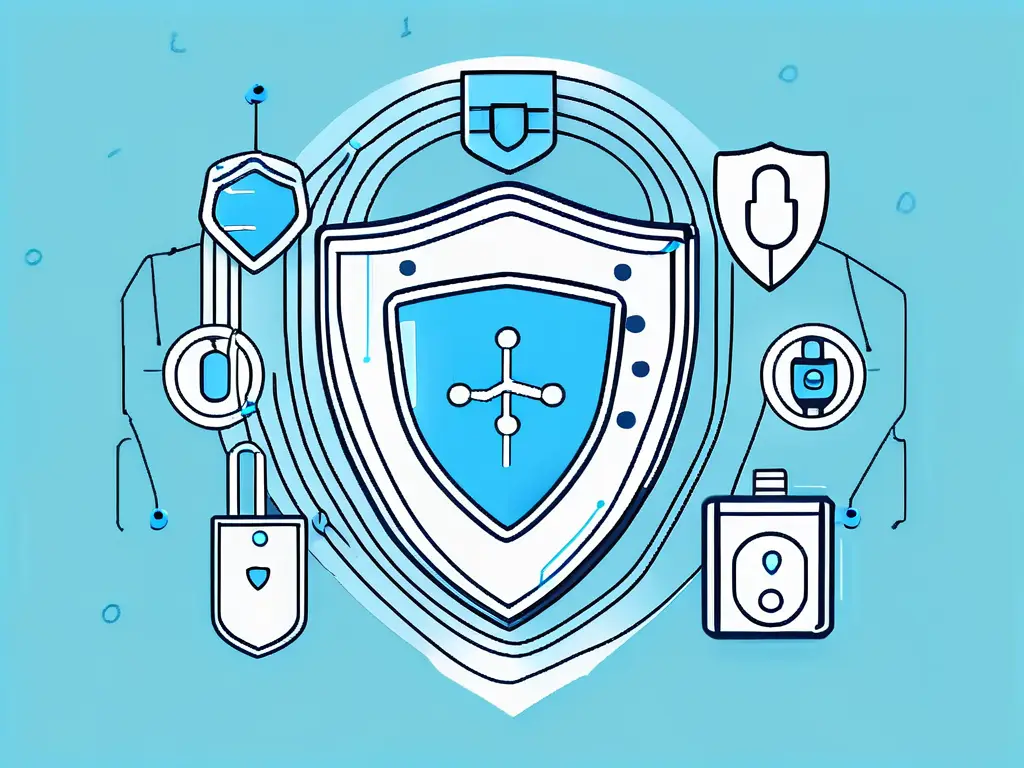The healthcare industry increasingly relies on Software as a Medical Device (SaMD) to provide cutting-edge medical solutions. SaMD plays a vital role in transforming modern healthcare but also brings many cybersecurity concerns. Protecting sensitive patient data and ensuring the integrity of medical devices is critical for patient safety and the overall sustainability of the healthcare ecosystem. In this article, we will delve into the world of SaMD cybersecurity to understand the importance of this issue and explore the best practices that can help secure medical devices effectively.
Understanding SaMD and Its Importance in Healthcare
Before we discuss SaMD cybersecurity in detail, it’s essential to understand the concept of Software as a Medical Device (SaMD) and its significance in the healthcare landscape.

Software as a Medical Device (SaMD) is a rapidly evolving field within healthcare technology that has been gaining traction in recent years. SaMD refers to software intended to be a standalone medical device, distinct from the hardware it runs on. It plays a crucial role in diagnosing, preventing, monitoring, or treating diseases, making it a game-changer in medicine.
Defining SaMD: A Brief Overview
SaMD refers to software intended to be a standalone medical device, distinct from the hardware it runs on. It plays a crucial role in diagnosing, preventing, monitoring, or treating diseases, making it a game-changer in medicine.
One of the critical aspects of SaMD is its ability to adapt and evolve rapidly to keep pace with advancements in medical research and technology. This flexibility allows SaMD to stay relevant and practical in an ever-changing healthcare landscape.
The Role of SaMD in Modern Healthcare
SaMD has revolutionized modern healthcare by offering innovative solutions that extend beyond the traditional boundaries of medical devices. From remote patient monitoring to artificial intelligence-powered diagnostics, SaMD has paved the way for improved patient care and streamlined medical workflows.
SaMD has opened up new possibilities for personalized medicine, allowing healthcare providers to tailor treatments and interventions to individual patient’s unique needs and characteristics. This customized approach can potentially enhance treatment outcomes and patient satisfaction, marking a significant shift in how healthcare is delivered.
The Cybersecurity Threat Landscape for SaMD
As Software as a Medical Device (SaMD) continues to grow, it is essential to acknowledge the ever-evolving cybersecurity threat landscape that poses significant risks to patient safety and data privacy. SaMD refers to software intended for medical purposes that perform these purposes without being part of a hardware medical device.
Ensuring the security of SaMD is crucial due to the sensitive nature of the data it handles, including patient health information and treatment protocols. The interconnected nature of healthcare systems also increases the potential attack surface for cyber threats, making robust cybersecurity measures a necessity.
Common Cybersecurity Threats to SaMD
One of the most prevalent cybersecurity threats to SaMD is data breaches, which can expose patient information and compromise the integrity of medical devices. These breaches can occur through various means, such as phishing attacks, ransomware, or exploitation of software vulnerabilities. Malware infections, unauthorized access by malicious actors, and inadequate encryption methods are significant concerns in safeguarding SaMD.
The integration of the Internet of Things (IoT) in SaMD devices introduces additional vulnerabilities, as interconnected devices create a complex network that cybercriminals can target. The lack of standardized security protocols across different SaMD products further complicates the mitigation of cybersecurity risks, emphasizing the need for industry-wide collaboration and regulatory guidelines.
Potential Consequences of SaMD Cybersecurity Breaches
The ramifications of SaMD cybersecurity breaches can be grave, extending beyond immediate data exposure. Patient safety can be compromised, leading to misdiagnoses, delayed treatments, or even life-threatening situations. The loss of trust in healthcare providers due to security incidents can have long-lasting effects on patient-provider relationships and the adoption of digital health technologies.
The financial implications of cybersecurity breaches in SaMD can be substantial, encompassing regulatory fines, legal settlements, and reputational damage. Healthcare organizations may face operational disruptions, loss of revenue, and increased insurance premiums due to inadequate cybersecurity practices. Addressing these consequences requires a proactive approach to cybersecurity risk management, including regular security assessments, employee training, and incident response planning.
Best Practices for SaMD Cybersecurity
Implementing best practices can significantly reduce the risks associated with cybersecurity threats. Companies in the healthcare industry must prioritize cybersecurity measures to safeguard patient data and ensure the reliability of medical devices.
Implementing a Robust SaMD Cybersecurity Framework
A useful SaMD cybersecurity framework encompasses risk management, vulnerability assessments, and security controls. Emphasizing continuous monitoring and threat intelligence can help identify and mitigate potential vulnerabilities. Regular audits and penetration testing are essential components of a robust cybersecurity framework to stay ahead of evolving cyber threats in the healthcare sector.
Collaboration with cybersecurity experts and regulatory authorities is vital to ensure compliance with industry standards and regulations. Establishing clear protocols for incident response and data breach management is imperative to minimize the impact of cybersecurity incidents on patients and healthcare providers.
Elements of Secure SaMD Design and Development
Secure design principles, rigorous testing, and employing industry-standard encryption protocols are vital to developing secure SaMD. Building security into the software development lifecycle can help minimize vulnerabilities and ensure the integrity of medical devices. Additionally, conducting thorough security assessments during each development phase and post-market surveillance is essential to identify and address potential security weaknesses.
Fostering a culture of cybersecurity awareness among employees and stakeholders is crucial for maintaining a secure environment for SaMD. Regular training on cybersecurity best practices and promoting a security-first mindset can enhance the overall resilience of medical devices against cyber threats. Collaboration between software developers, cybersecurity specialists, and healthcare professionals is essential to address the complex cybersecurity challenges faced by the healthcare industry.
Regulatory Guidelines for SaMD Cybersecurity
Regulatory guidelines play a crucial role in setting standards and promoting compliance to ensure the highest level of security for software as a medical device (SaMD). SaMD refers to software intended for medical purposes without being part of a hardware medical device.
The stakes are incredibly high regarding cybersecurity in the healthcare sector. Any breach or vulnerability in SaMD could compromise patient data, treatment outcomes, and patient safety. This is why regulatory bodies such as the Food and Drug Administration (FDA) in the United States and the European Commission have outlined stringent guidelines targeting SaMD cybersecurity.
Overview of Regulatory Standards for SaMD Cybersecurity
Compliance with these standards is not just a recommendation but a necessity for SaMD manufacturers. The FDA’s guidelines, for example, focus on risk management, cybersecurity controls, and post-market surveillance to ensure ongoing safety and effectiveness. Similarly, the European Commission’s regulations emphasize the importance of data protection, encryption, and secure software development practices.
Manufacturers of SaMD must understand that regulatory compliance is not a one-time task but an ongoing commitment to maintaining the integrity and security of their products. By adhering to these standards, manufacturers can demonstrate their dedication to patient safety, data privacy, and overall product quality. Moreover, compliance with regulatory guidelines is essential for gaining market approval, fostering trust among healthcare providers, and ensuring the seamless integration of SaMD into clinical practice.
Future Trends in SaMD Cybersecurity
As technology advances, so do the cybersecurity measures required to protect Software as a Medical Device (SaMD). Staying ahead of emerging trends is crucial for mitigating future risks and ensuring the safety and integrity of patient data.

Emerging Cybersecurity Technologies for SaMD
New technologies are continuously being developed to enhance SaMD cybersecurity. Advanced encryption methods, utilizing homomorphic encryption and quantum cryptography, are being explored to provide robust protection for sensitive medical data. Additionally, Artificial Intelligence (AI) and Machine Learning (ML) algorithms are being integrated into cybersecurity systems to enable proactive threat detection and rapid response capabilities. These advancements hold great potential in fortifying the defense mechanisms of medical devices against ever-evolving cyber threats.
Blockchain technology is gaining traction in the healthcare industry because it can create secure and immutable records. By implementing Blockchain in SaMD systems, healthcare providers can ensure the integrity and traceability of patient data, reducing the risk of unauthorized access or tampering.
The Future of SaMD: Balancing Innovation and Security
As the healthcare industry continues to embrace the transformative power of SaMD, the need to strike a delicate balance between innovation and security becomes increasingly apparent. It is essential to foster a culture of cybersecurity awareness and resilience within organizations developing and utilizing SaMD. By prioritizing security measures and promoting collaboration between cybersecurity experts and medical innovators, the industry can drive advancements in patient care while safeguarding against potential cyber threats.
Integrating regulatory frameworks, such as the FDA’s premarket cybersecurity guidelines for medical devices, plays a crucial role in ensuring the safety and effectiveness of SaMD. Compliance with these regulations demonstrates a commitment to patient safety and instills trust in healthcare providers and patients regarding the reliability of medical devices.
As the healthcare industry navigates the complexities of SaMD cybersecurity, the importance of partnering with a cybersecurity expert cannot be overstated. Blue Goat Cyber is ready to assist you with its unparalleled expertise in medical device cybersecurity and commitment to HIPAA and FDA compliance. Our veteran-owned business is dedicated to providing the highest level of protection for your digital assets, ensuring that your medical devices remain secure against the ever-evolving cyber threats. Contact us today for cybersecurity help, and let us help you maintain the delicate balance between innovation and security, keeping your patient data safe and your medical devices secure.


